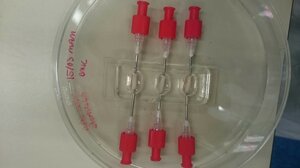
Though mostly not life-threatening, chronic skeletal diseases have a high impact on the quality of life. Their treatments come with societal costs that are rising due to our ageing society. In order to develop advanced therapeutics, preventives or cures in bone diseases, it is essential that we understand the cellular interactions that underlie bone physiology and pathology. This project aims to develop a miniature bone-on-a-chip system. Miniaturization of cell culture experiments can be achieved with the use of microfluidics systems. Advances at the intersection of tissue engineering and microfluidics, made it possible to grow in vitro tissues in physiologically relevant microenvironments to study how cells interact with drugs, pathogens and biomaterials. These systems have important advantages over macroscopic culture such as reduced reagent consumption and contamination risk, high throughput experimentation, automation and parallelization. Understanding the basic principles of bone remodeling on a cellular level will accelerate development of bone disease treatments. Downscaling the tissue-engineered bone to a microfluidic system will facilitate its application as a diagnostic or drug development tool.